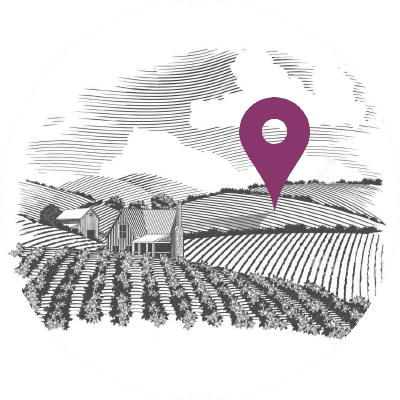Lagrein
No products found
Use fewer filters or remove all
Use fewer filters or remove all
-
 12.5%Regular price €12,50
12.5%Regular price €12,50Regular price €12,50 Sale price Unit price per -
 13.5%Regular price €18,00
13.5%Regular price €18,00Regular price €18,00 Sale price Unit price per -
 13.0%Regular price €11,00
13.0%Regular price €11,00Regular price €11,00 Sale price Unit price perLowest price: Is the lowest price at which the product was on sale during the 30 days before the price reduction, including other promotional periods -
 11.5%Regular price €15,00
11.5%Regular price €15,00Regular price €15,00 Sale price Unit price per -
 13.0%Regular price €12,50
13.0%Regular price €12,50Regular price €12,50 Sale price Unit price per -
 12.5%Regular price €13,50
12.5%Regular price €13,50Regular price €13,50 Sale price Unit price per -
 14.0%Regular price €29,00
14.0%Regular price €29,00Regular price €29,00 Sale price Unit price per -
 13.5%Regular price €16,50
13.5%Regular price €16,50Regular price €16,50 Sale price Unit price perLowest price: Is the lowest price at which the product was on sale during the 30 days before the price reduction, including other promotional periods -
 13.0%Regular price €11,50
13.0%Regular price €11,50Regular price €11,50 Sale price Unit price perLowest price: Is the lowest price at which the product was on sale during the 30 days before the price reduction, including other promotional periods -
 3 GRGambero Rosso
3 GRGambero Rosso
This guide is highly respected and offers the most comprehensive review of Italian wines. It has a long tradition and is based on blind tastings carried out by over 100 experts.5 BBBibenda
Italian Sommelier Foundation (FIS) guide This has been one of the most prestigious wine guides in Italy for over 10 years.14.0%Regular price €48,00Regular price €48,00 Sale price Unit price per -
 14.0%Regular price €24,00
14.0%Regular price €24,00Regular price €24,00 Sale price Unit price perLowest price: Is the lowest price at which the product was on sale during the 30 days before the price reduction, including other promotional periodsSold out -
 89 WSWine Spectator
89 WSWine Spectator
Wine spectator is the most influential wine guide on the internet.89 VOVinous
Vinous is the online guide from Antonio Galloni, one of the world's leading wine connoisseurs.13.5%Regular price €20,00Regular price €20,00 Sale price Unit price perLowest price: Is the lowest price at which the product was on sale during the 30 days before the price reduction, including other promotional periods
Autochthonous
(Locale)

Lagrein
| Area type | Autochthonous |
| Color type | Red grape |
| Vigor | Very good |
| Features | Leaf: more than average, pentagonal, trilobate; U-V pectoral breast, lateral veins above V-U shallow (sometimes there are two lower lateral sinuses just mentioned); Corner at the top of the dull terminal lobe; Thin flap, wavy, slightly bulky; Slightly pronounced lobes, facing down; Upper page glabra, opaque, dark green, light green bottom page, with hairs; Green ribs, protruding those of 1 ° -2 ° -3 ° order. Moderately pronounced teeth, in two sets slightly irregular, with concave margins on the one hand.Bunch: slightly pyramidal, sometimes short (about 10 cm long), rough and with 1-2 wings, medium compactness (if the casting does not intervene); Herbaceous peduncle, of varying length; Middle pedicels, reddish-green; Apparent, verdant, red-eye.Acino: Medium (diameter 14.5 mm), oval shaped, regular, thick, consistent, pruinose skin, with blue-black color regularly distributed; Persistent navel; Soft flesh, neutral taste, acidity, colorless juice; Brush short, reddish; Easy acina separation. |
| Features wine | With the lagrein you get an intense and deep ruby red wine with a fine and fruity scent, enriched with some plant notes and some purple memories, which with refinement are enriched with balsamic notes and chocolate. The taste is dry and sapid, well balanced in the qualities of freshness and softness, while the tannic component is not aggressive, but it contributes to an elegant structure that makes this wine suitable for refining. |
| Growing areas | It is very popular in Trentino and South Tyrol. |
| History | The grape is most probably native to the region, and is thought to take its name from the town of Val Lagarina in Trentino. It has certainly been grown in this area for hundreds of years, and is first mentioned in texts that date back as far as the 16th Century. Other theories give Lagrein a Greek origin, suggesting that it is closely related to wines that were once made around the city of Lagaria in Greece. |
| Notes | Resistance to parasites: just discreet to ojidium and deworming; Resistant to rotting; A bit subject to mites. |
| Productivity | It is abundant, but not always constant, as it is easily wet and spinning in wet springs. |
| Ripening period | Earliest of october. |
| Synonyms | lagrain, lagarino, lagrein langestieligen. |
| Type | Aromatised |












